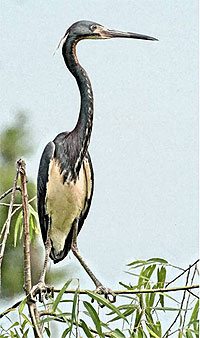 |
| |

Click on a parish to change parishes. |
| |
|
| |
|
| |
|
| |
|
| |
|
| |
PARISH PLANNING BASELINE |
|
|
|
|
| |
|
| |
| |
| |
|
| |
|
| |
 |
| |
|
|
|
 |
Cameron Parish
Cameron Parish is the westernmost coastal parish of Louisiana. With fewer than 10,000 people, large Cameron is one of the more sparsely populated areas in the state. Its naturally stunning coastal marshes are an international destination for bird watchers and eco-tourists. The parish economy is largely linked to support for the oil and gas industry while excellent hunting and fishing contributes outside spending to local businesses. Cameron’s many wetlands and lakes reward visitors with unspoiled beauty and solitude.
After Hurricane Rita, Cameron residents were asked what they value most about living in their parish. They responded:
“We treasure our strong community spirit, rural lifestyle, outdoor activities, sportsman's paradise, cheniers, marshes, wildlife refuges and strong school system.” |
|

 |
- Cameron has 1,313 sq. miles in land area and a population density of 7.4 per square mile. In the last three decades of the 1900s, its population grew by 21.9%.
- The cheniers in the southern part of the parish are former beaches that, through the activities of nature, have become isolated from the Gulf by strips of marshes. Scientists believe they are more than 1,200 years old.
- The average household size is 2.76 persons compared to an average family size of 3.21 persons.
- In 2004, transportation and warehousing was the largest of 20 major employment sectors. It had an average wage per job of $44,378.
- Per capita income grew by 11.5% between 1993 and 2003 (adjusted for inflation).
- The parish seat is Cameron.
- Larger communities are Cameron, Creole, Hackberry and Holly Beach.
- The parish was named for Simon Cameron, U.S. Senator from Pennsylvania.
- Pre-storm, the population was 9,680.
- Significant economic interests are Public Administration (Government and schools), raw materials (oil and gas), fishing and hunting tourism, ecotourism.
|
|
|